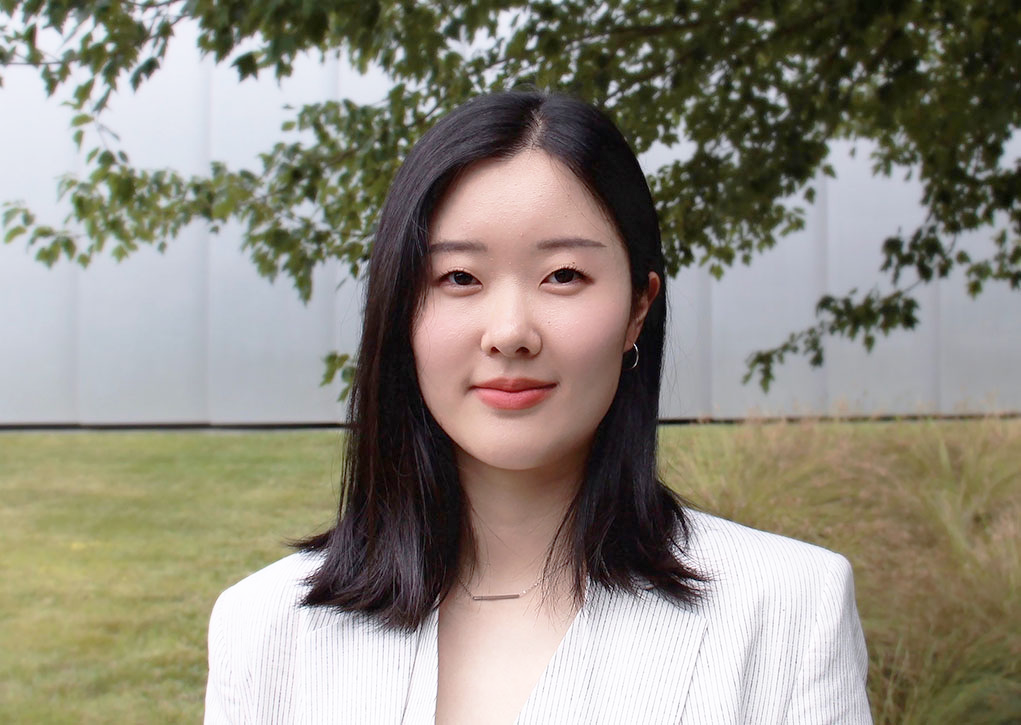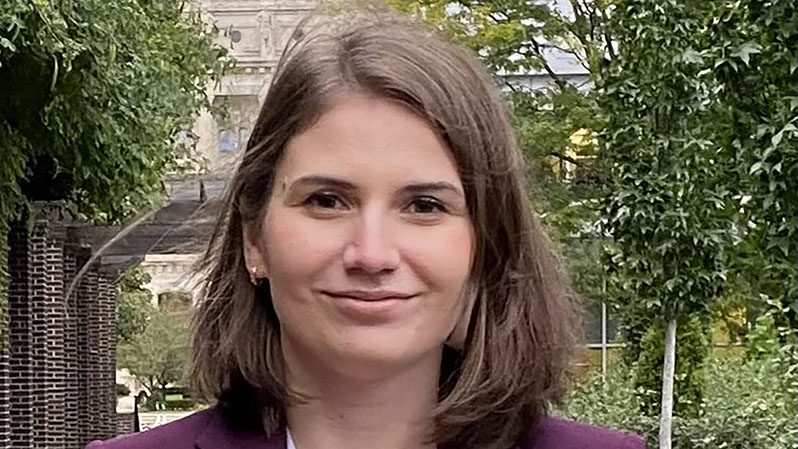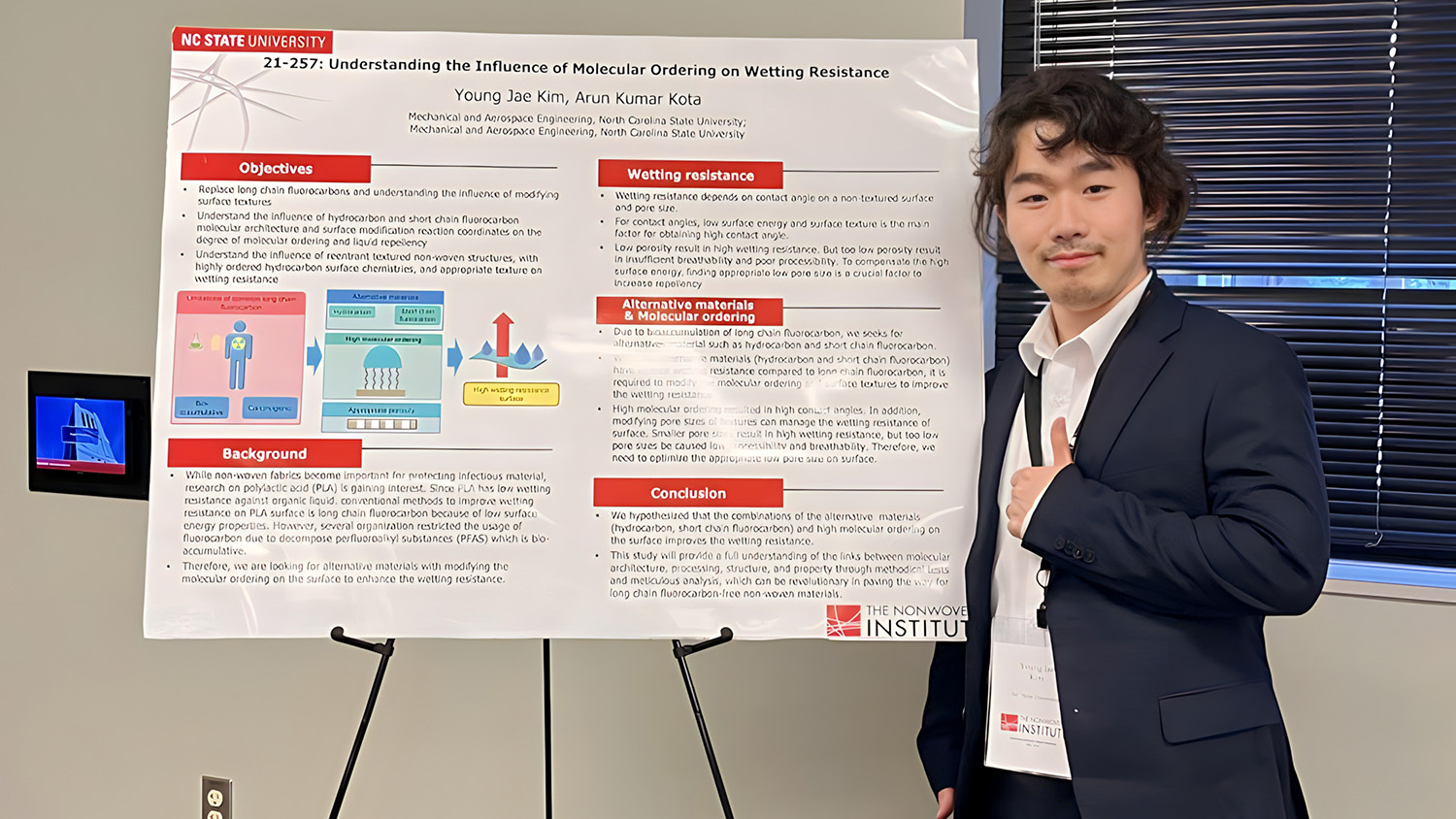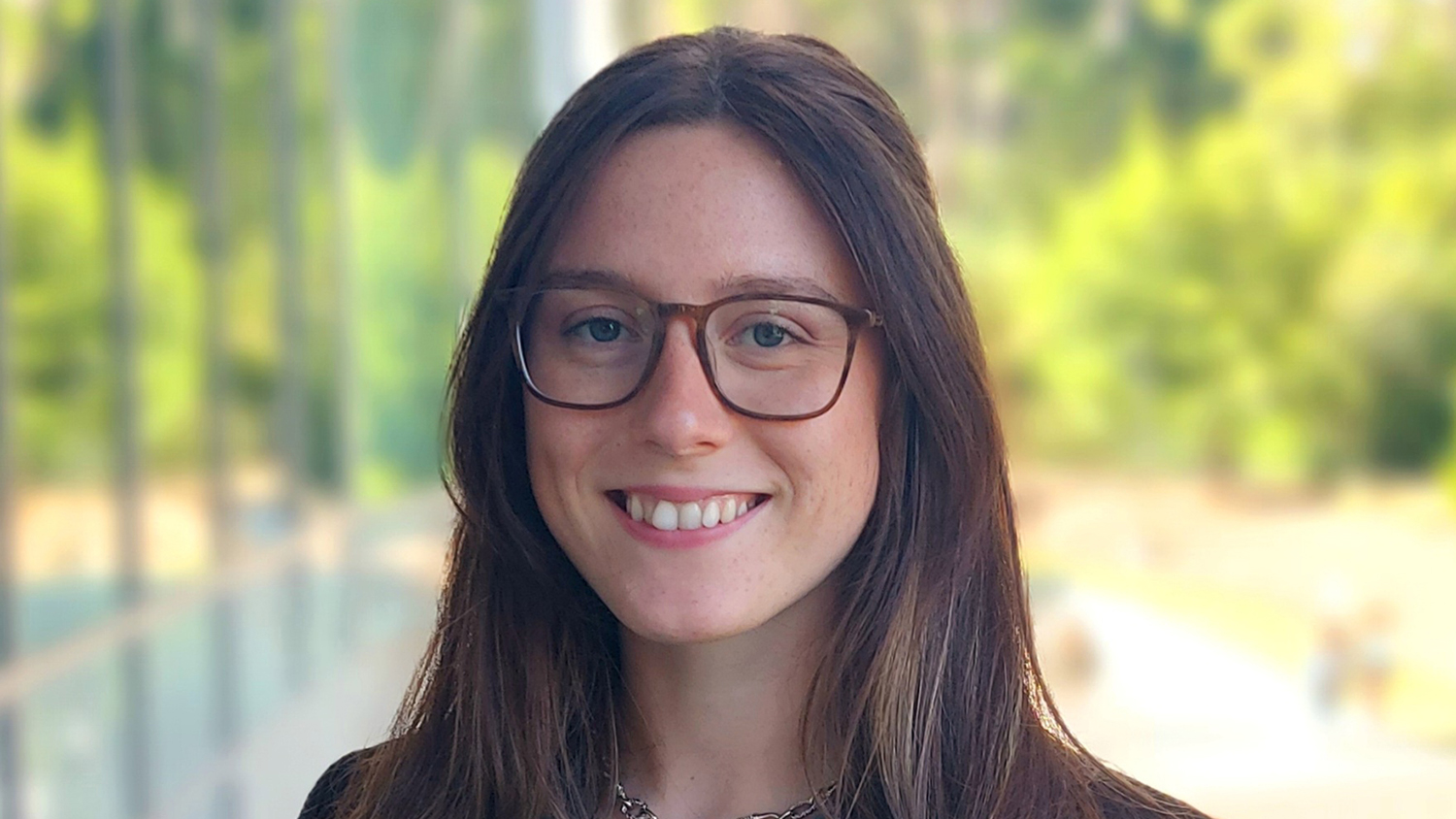Christine Lee
Degree Type: Ph.D.
Expected Graduation Date: 2025
School/Department: Wilson College of Textiles, NC State University
Program/Focus: Fiber and Polymer Science
Research Project: PLA Nonwovens
Professor/Faculty Advisor: Behnam Pourdeyhimi, Ph.D., NWI/NC State University; Mehmet Dasdemir, Ph.D., NWI/NC State University
How did you come to have an interest in nonwovens?
Having majored in Textile Technology at the Wilson College of Textiles for my undergraduate studies, I was fortunate to be exposed to a wide range of materials, one of which was nonwovens. One aspect of nonwovens that was particularly interesting to me is that it is a highly interdisciplinary field of study, encompassing a very diverse background of knowledge. As such, I was encourage by the opportunity to continue my academic studies through The Nonwovens Institute (NWI) in order to experience first-hand, in-depth learning about the wide range of applications and technologies related to nonwovens.
Why are your research/findings particularly important/compelling for nonwovens applications?
My research project at NWI is focused on investigating the use of polylactic acid (PLA) in nonwovens, particularly related to the structure-property-process relationships of spunbond and meltblown nonwovens. As the demands of government regulations and consumers alike push for alternative resources to enable a sustainable future, my research aims to contribute to the fundamental understanding of using PLA (and its blends with other biopolymers) as an alternative to currently used materials in the nonwovens industry.
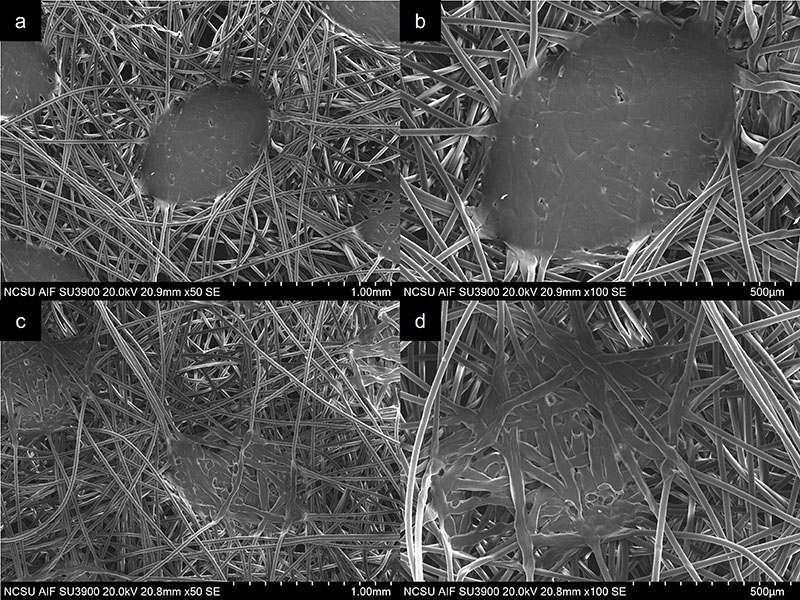
Previous research conducted at NWI found that PLA blended with other bio-based polymers can lead to an improvement in properties such as crystallinity, shrinkage and heat-deflection temperature in melt-spun fibers. Building upon this prior work, Christine’s NWI research project aims to enhance the properties of PLA-based nonwovens through investigations of thermal bonding, charge density and nucleation in spunbond and meltblown materials, respectively.
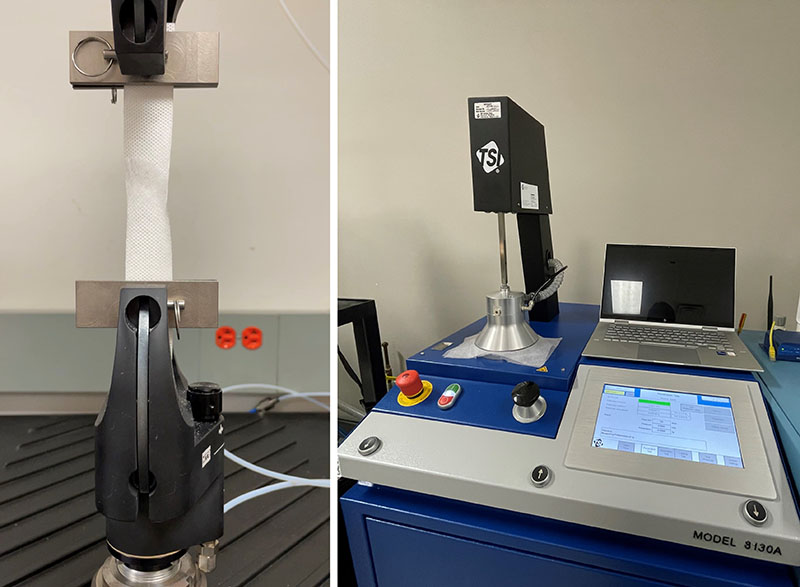
Where do you see yourself upon completion of your studies? Where do you see yourself 5-10 years into the future as you progress in your career?
Following the completion of my studies at NC State, I wish to enter the industry in a career that is interdisciplinary where I can utilize the training, techniques and skillset gained from my Ph.D. in a hands-on role, such as R&D, consulting and/or marketing within a company that values innovation and sustainability. While I hope to work within the nonwovens industry, I am open to any opportunities, as I am always looking to continuously improve myself. In 5-10 years, I see myself working in a senior role where I have been able to deepen my skills.
When you are not studying and doing your nonwovens research project, what are your personal interests, hobbies … any activities you would like to highlight?
In my free time, I enjoy taking time outdoors, especially walking the many trails and parks in Raleigh, listening to music, reading, cooking and creating digital art.
- Categories:
